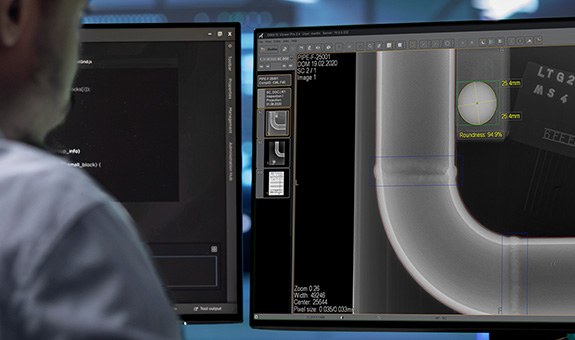Welcome to the DIMATE blog

Introducing DIMATE AI Solutions - transforming the future of NDT at scale
Three breakthrough AI innovations are redefining the standard - entering a new era of intelligent, data-driven NDT
Read more
5 ways DIMATE PACS unlocks AI’s full potential in NDT – the bridge between your AIM system and smart automation
by Jens Martin, CTO at DIMATE
Read more
Why your NDT investment deserves real numbers – not just promises
Of course, no single business case is the same as the next. But one thing decision-makers consistently seek is clarity: what return can we expect from our investment? At DIMATE, we understand this need – and we’re proud to say we…
Read more
Unlocking efficiency and compliance in Aerospace NDT with DIMATE PACS
Modern aerospace operations are under intense pressure to deliver maximum uptime and flawless safety records - while meeting strict regulatory oversight from agencies such as FAA, NADCAP, and EASA. As aircraft systems become more…
Read more
The Future of Ultrasonic Testing in Energy Plants
Ultrasonic testing of pipes, weld seams and castings is, alongside radiographic testing, one of the most efficient and widely used NDT methods for ensuring the integrity of systems during operation.
Read more
Revolutionizing Oil & Gas: Why Digital Transformation Is a Must-Have in 2025
The oil and gas industry, a cornerstone of global economic growth, is standing at a crucial crossroads in 2025. Digital transformation is no longer a choice—it’s a fundamental necessity. In a world of rapid technological advancem…
Read more
The Hidden Costs of Manual NDT Processes
NDT is essential in maintaining asset integrity in industries like oil and gas. However, many companies still rely on manual processes that introduce inefficiencies and risks.
Read more
DIMATE PACS at MiRO: Digital NDT in Germany's largest refinery
The NDT processes in Germany's largest refinery should become digital in order to increase quantity, quality, speed and transparency. The MiRO refinery selected DIMATE for the implementation of this flagship project.
Read more
Paperless Inspections with DIMATE PACS
Our recent showcase at OEEC Amsterdam, where DIMATE's Global Energy Manager delivered an overview of PACS components and how it seamlessly connects IDMS and NDT devices.
Read more
Closing the Gaps: DIMATE PACS Redefines Plant Inspection Workflow
DIMATE PACS has revolutionized inspection image management and inspection data processing, introducing a new era of efficiency and accuracy in plant inspections.
Read more
Revolutionizing the inspection of energy plants: DIMATE introduces a new AI module
We're taking a major step forward in non-destructive evaluation with the development of an AI module that automatically detects plant components in NDE RT-images and applies the appropriate correct inspection instruction. Our…
Read more
Increased Measurement Reliability for Pipeline Inspection in Energy and Petrochemical Plants
The automated calibration of RT test images in the DIMATE Viewer Pro significantly increases measurement reliability when determining residual wall thicknesses in pipelines.
Read more
Component Content Management for the Energy Industry
DIMATE offers a central and structured lifetime documentation for relevant components with integration into the customer's administrative systems and thus closes the existing gap.
Read more
A look into the medical field: This is how digitalization works!
A story about what NDT can learn from medicine, and especially radiology, in terms of digital workflows. After all, the path to "diagnosing" a knee and a component is almost identical.
Read more
New function in DIMATE Viewer Pro: Stitching of RT images
The DIMATE Viewer Pro now has a new feature for stitching RT images: the images are registered and digitally stitched together to form an overall image.
Read more